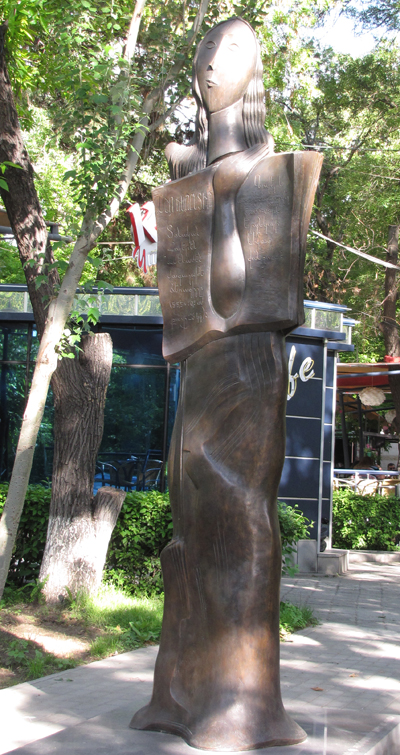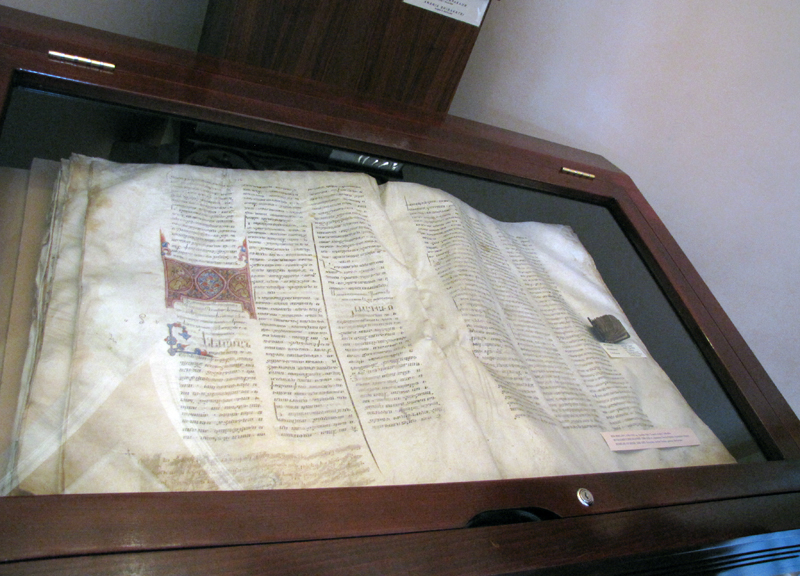By Joseph Dagdigian
In Venice, in 1512, manuscript lover Hagop Meghapart printed the first Armenian book, the Urbatagirk prayer book, giving birth to the art of Armenian printing. Prior to this Armenian manuscripts were laboriously hand written, copied, and illustrated by scribes. Last year, 2012, Armenians celebrated the 500th anniversary of Armenian printing with a number of events. One of these events was the establishment of a monument commemorating the heroic rescue of the Msho Jarntir, Homilies of Mush, manuscript in Armenia’s capital of Yerevan.
During the 1915 Genocide of the Armenians, Turkey not only was intent on destroying the Armenian population in Western Armenia, it also attempted to erase from the Turkish occupied Armenian homeland any remnants of Armenian civilization – including cultural monuments, libraries, monasteries, and manuscripts. Two women, both from Mush, whose names as far as I know are unknown, determined that a priceless Armenian manuscript which they found in the ruins of Mush’s Surb Arakelots Monastery must be rescued. The manuscript was huge, 22 inches wide and 27 inches long, weighing 61 pounds. The women divided the manuscript into two parts, each endeavoring to transport their half to the relative safety of Eastern (Caucasian) Armenia. Probably not knowing if they, their families, Mush, or even Armenia would survive the horrors of the Genocide, they determined that this religious, cultural, and literary treasure must live to see another day. It is not even known if these women were literate. This book was and is a part of Armenia’s cultural heritage. One woman succeeded in delivering her half of the book to Holy Echmiadzin. The other woman did not survive her journey. Reaching Erzurum, she buried her half of the manuscript in a monastery there, and subsequently died. Later a Russian soldier found this half of the book and ultimately both halves of the book were reunited in Armenia’s manuscript repository, the Matenadaran, in Yerevan.


In the Matenadaran’s display room the Msho Jarntir – Homilies of Mush, the largest manuscript in the Matenadaran’s collection, is on display next to the smallest manuscript in the Matenadaran’s collection. These and numerous other ancient manuscripts may be viewed by visitors, and photographed (without flash) for a small fee.
The monument commemorating the rescue of the Homilies of Mush may be seen on the greenway near the intersection of Teryan and Moskovyan streets in Yerevan. The monument depicts the Msho Jarntir and two women rescuers.
A homily is a story or sermon intended to set a moral example without delving into detailed religious or theological issues. The Homilies of Mush was written in the Avag Monastery in Yerzinga, Western Armenia, around 1200-1202. It was commissioned by a man named Astavatsadur, perhaps a wealthy merchant, who was killed during the Mongol – Tatar invasion of Armenia. Through a series of events the manuscript ended up in Mush. It miraculously survived the Genocide, and was rescued by two women – cultural heroes of Armenia.










